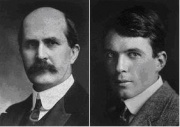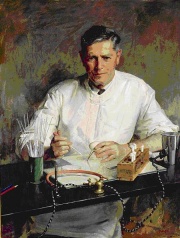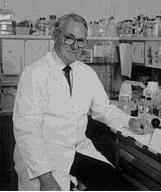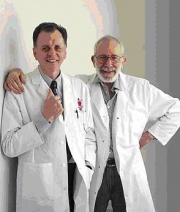Учебный проект Австралия в объективе \ Чем знаменитые люди Австралии прославили свою страну?
Содержание |
Australia's famous people
There are a lot of famous Australians among actors, produsers,singers,composes,polititions,sientists and sportsmen. Australia for its small population has produced a remarkable number of Nobel Prize winners.Australia’s Nobel Prize winners reflect the nation’s strong record of innovation and scientific achievement. Of the 10 Nobel Prizes generally accepted as having been awarded to Australians since 1915, nine were for science or medicine and one was for literature. Another eight people with links to Australia have won Nobel Prizes, five of them for science or medicine.
Australian scientific and medical breakthroughs recognised with Nobel Prizes include the analysis of crystals using X-rays; the development of penicillin; the discovery of acquired immunological tolerance; research on how nerves and the brain work; and the discovery of a bacterium and its role in gastritis and peptic ulcers.
With a population of just over 21 million, Australia is one of the leading Nobel Prize–winning countries in per capita terms. Yet there is no simple answer to the question of exactly how many Nobel laureates Australia has produced. Although there are 10 laureates who are generally regarded as being ‘Australian’, there are a number of other awardees with close links to Australia.
William Bragg and Lawrence Bragg
William Bragg and his son Lawrence Bragg—jointly awarded the prize in physics in 1915 for their ‘services in the analysis of crystal structure by means of X-rays’.
Sir William Bragg (1862–1942) was born at Westward, Cumberland, and studied mathematics at Trinity College. In 1885, when he was just 23, he was elected to the new Chair of Mathematics and Experimental Physics at the University of Adelaide. In 1909 he returned to England with his wife and Adelaide-born family to take up the position of Cavendish Professor of Physics at Leeds.
Sir Lawrence Bragg (1890–1971) was born in Adelaide and educated at the Collegiate School of St Peter. He topped his final year and won a scholarship to the University of Adelaide, which he entered at the age of 15. In 1908 he took first-class honours in mathematics. When the family returned to Britain in 1909 he took up the study of physics at Trinity College, Cambridge.
Together, father and son initiated the field of X-ray crystallography. Their work on crystal structure opened a new branch of physics, with particular relevance for biology. Their experiments made it possible for biologists to determine the three-dimensional structure of proteins and to determine exactly how they worked at an atomic level. This knowledge led to the design of drugs tailored to the architecture of the protein at which they are directed.
"The important thing in science is not so much to obtain new facts as to discover new ways of thinking about them."
Sir Lawrence Bragg
Sir Frank MacFarlane Burnet
Sir Frank MacFarlane Burnet (1899–1985)—awarded the prize in physiology or medicine in 1960 ‘for discovery of acquired immunological tolerance’.
Frank MacFarlane Burnet was born in Traralgon, Victoria, and was educated at Geelong College and the University of Melbourne, qualifying MBBS (Bachelor of Medicine, Bachelor of Science) in 1922 and MD in 1924. Apart from a few years overseas, Burnet spent his entire career from 1923 onwards at the Walter and Eliza Hall Institute of Medical Research in Melbourne. Burnet was twice nominated for the Nobel Prize for virology before he won it for immunology. He first speculated on antibody production in 1941, suggesting that animals became immunologically tolerant to antigens to which they were exposed in embryonic life, thus ‘learning’ in the womb to distinguish between foreign agents which had to be attacked, and self-substance which had to be left alone. English scientist Peter Medawar confirmed this experimentally and he and Burnet were jointly awarded the Nobel Prize.
Sir John Warcup Cornforth
Sir John Warcup Cornforth —awarded the prize in chemistry in 1975 ‘for his work on the stereochemistry of enzyme-catalysed reactions’.
John Cornforth was born in Sydney and educated at Sydney Boys’ High School and the University of Sydney. He chose chemistry as his career and, although deaf from otosclerosis by the time he entered university at the age of 16, Cornforth graduated with first-class honours and the University Medal in 1937.
Cornforth took up a scholarship to work with Robert Robinson at Oxford, where he completed a doctorate on steroid synthesis. He later worked with Robinson on a successful chemical synthesis of cholesterol before turning to the work for which he was awarded the Nobel Prize—the biosynthesis of cholesterol from acetic acid.
Barry Marshall and Dr Robin Warren
Professor Barry Marshall and Dr Robin Warren—jointly awarded the prize in physiology or medicine in 2005 ‘for the discovery of the bacterium Helicobacter pylori and its role in gastritis and peptic ulcer disease’.
Professor Barry Marshall (1951–) was born in Kalgoorlie in Western Australia and was educated at Newman College and the University of Western Australia. He graduated MBBS (Bachelor of Medicine, Bachelor of Science) in 1975. In 1981 he transferred to the Royal Perth Hospital’s gastroenterology division, where he met Robin Warren.
Robin Warren (1937–) was born in Adelaide, South Australia. He was educated at the Collegiate School of St Peter in Adelaide and studied medicine at the University of Adelaide. After working at the Royal Adelaide and Royal Melbourne Hospitals, he took up a pathology position at the Royal Perth Hospital in Western Australia in 1968.
Together, Warren and Marshall discovered Helicobacter pylori in 1982. They concluded that this bacterium—not stress—causes more than 90 per cent of duodenal ulcers and up to 80 per cent of peptic ulcers. Their work revolutionised the treatment of gastro-duodenal ulcers by enabling an antibiotic cure and has led to a significant reduction in the prevalence of gastric cancer.




